SpaceX's giant Starship rocket is poised to head for space from South Texas.
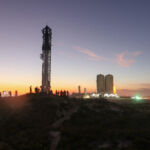
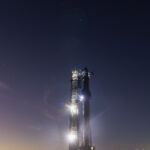
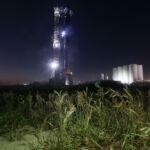
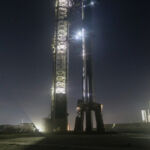
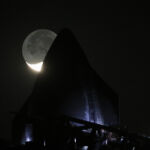
スペースX社の巨大ロケット「スターシップ」がテキサス州南部から宇宙に向かう準備が整っている。
BOCA CHICA BEACH, Texas—Early Saturday morning, SpaceX will load more than 10 million pounds of super-cold methane and liquid oxygen into the propellant tanks inside the company's second flight-ready Super Heavy booster and Starship rocket.
テキサス州ボカチカビーチ—土曜日の早朝、スペースX社は、同社の2番目の飛行準備ができているスーパーヘビーブースターとスターシップロケット内の推進剤タンクに1000万ポンド以上の超低温メタンと液体酸素を積み込む。
Then, if all goes according to plan, 33 Raptor engines will light at 7 am CST (13:00 UTC) to propel this gigantic rocket into the sky over Boca Chica Beach, a remote stretch of South Texas shoreline a couple of miles north of the US-Mexico border. SpaceX will live stream the event on X.
その後、すべてが計画通りに進めば、33基のラプターエンジンが中部標準時午前7時(協定世界時13時)に点火し、この巨大なロケットをボカチカビーチの上空に推進させることになる。アメリカとメキシコの国境。 SpaceXはXでイベントをライブストリーミングします。
Space fans got what they hope will be their last look at this particular rocket Friday night, hours before law enforcement closed off public access to the launch site. One of the neat things about SpaceX's privately-owned South Texas launch site, named Starbase, is the public can approach within a few hundred feet of the rocket. The surrounding mud flats, dunes, and beach are all public land.
宇宙ファンは金曜の夜、法執行機関が発射場への一般の立ち入りを禁止する数時間前に、このロケットを最後に見ることになると期待するものを手に入れた。スターベースと名付けられたスペースXの私有南テキサス発射場の優れた点の1つは、一般の人がロケットから数百フィート以内に近づくことができることだ。周囲の干潟、砂丘、海岸はすべて公共の土地です。
At government launch sites, such as Cape Canaveral, Florida, public access is generally restricted to guided tours. Even then, the closest most people can get to an active launch pad is about a mile, and much farther than that on launch days.
フロリダ州ケープカナベラルなどの政府の発射場では、一般の立ち入りはガイド付きツアーに限定されている。それでも、ほとんどの人が稼働中の発射台に近づくことができる距離は約 1 マイルであり、打ち上げ当日よりもはるかに遠くなります。
SpaceX delayed the Starship test flight from Friday to replace actuators on grid fins positioned near the top of the rocket's first stage. Ground teams removed the upper stage from the rocket Thursday to complete the repairs, then reinstalled the upper stage Friday morning to continue with launch preparations.
スペースXは、ロケットの第1段の上部付近に配置されたグリッドフィンのアクチュエーターを交換するため、金曜日からのスターシップ試験飛行を延期した。地上チームは木曜日にロケットから上段を取り外して修理を完了し、金曜日の朝に上段を再取り付けして打ち上げ準備を続けた。
The test flight on tap Saturday, if fully successful, will put SpaceX on a path toward additional demonstrations, and perhaps the first operational Starship flights to carry Starlink Internet satellites into orbit. Eventually, SpaceX wants Starship to be the next-generation vehicle to replace and expand the capacity offered by the company's existing Falcon 9 rocket and Dragon spacecraft.
土曜日のテスト飛行が完全に成功すれば、スペースXは追加のデモンストレーション、そしておそらくはスターリンク・インターネット衛星を軌道に運ぶ最初のスターシップ飛行に向けた軌道に乗るだろう。スペースXは最終的には、スターシップを、同社の既存のファルコン9ロケットやドラゴン宇宙船が提供する容量を置き換え、拡張する次世代の乗り物にしたいと考えている。
On Saturday, SpaceX's launch team will begin loading propellants into the Super Heavy booster and Starship upper stage a little more than 90 minutes before liftoff time. Thermal conditioning of the rocket's Raptor engines will start around 20 minutes prior to launch. In the final 10 seconds of the countdown, several hundred thousand gallons of water will flow through a deluge system to dampen the energy from the nearly simultaneous ignition of 33 Raptor engines at the bottom of the rocket.
土曜日、スペースXの打ち上げチームは打ち上げ時間の90分ちょっと前にスーパーヘビーブースターとスターシップ上段への推進剤の装填を開始する。ロケットのラプターエンジンの温度調整は、打ち上げの約20分前に開始されます。カウントダウンの最後の 10 秒間で、数十万ガロンの水が大洪水システムを通って流れ、ロケット下部にある 33 基のラプター エンジンのほぼ同時点火によるエネルギーを弱めます。
If you're a space enthusiast, that's when the real fun begins. Here are five things to watch for on SpaceX's second full-scale Starship test flight.
あなたが宇宙愛好家なら、そこから本当の楽しみが始まります。 SpaceXの2回目の本格的なStarshipテスト飛行で注目すべき5つの点を紹介する。
1. How will the launch pad hold up?
When the first Starship rocket launched April 20, it made a big mess. The blast from the Super Heavy booster's Raptor engines blew a hole in the concrete beneath the pedestal the rocket sits before launch. Massive chunks of concrete were strewn across hundreds of acres around the launch pad, denting tanks and carving craters in the surrounding mud flats. Clouds of dust and sand fell on communities several miles away.
1. 発射台はどのように耐えられるでしょうか? 最初の Starship ロケットが 4 月 20 日に打ち上げられたとき、大きな混乱が生じました。スーパーヘビーブースターのラプターエンジンからの爆発により、打ち上げ前にロケットが置かれている台座の下のコンクリートに穴が開いた。巨大なコンクリートの塊が発射台の周囲数百エーカーに散らばり、タンクがへこみ、周囲の干潟にクレーターができた。塵と砂の雲が数マイル離れた地域に降り注いだ。
This is something SpaceX doesn't want to repeat with the second test flight, so engineers installed a water deluge system at the pad to protect it from similar damage again. In the final seconds of the countdown, the deluge system will release up to 358,000 gallons of fresh water through channels built into a steel plate installed underneath the pad's circular launch mount. The fountain-like flow of water is supposed to absorb the heat and acoustic energy from the Super Heavy engines.
スペースX社は2回目の試験飛行でこのようなことを繰り返したくないため、技術者らは再び同様の損傷からパッドを守るためにパッドに水浸水システムを設置した。カウントダウンの最後の数秒で、大洪水システムはパッドの円形発射台の下に設置された鋼板に組み込まれた水路を通じて最大 358,000 ガロンの淡水を放出します。噴水のような水の流れは、超重量エンジンからの熱と音響エネルギーを吸収すると考えられています。
Other launch pads, including SpaceX's own launch facilities for the Falcon 9 rocket, use similar water deluge systems.
スペースX社独自のファルコン9ロケット用発射施設を含む他の発射台でも、同様の放水システムが使用されている。
SpaceX tested the water deluge system several times since April, including on a pair of hold-down engine tests with the Super Heavy booster in August. The launch pad held up fine during those hot-fire tests, and we'll soon know if the deluge system does the job during a real launch.
スペースXは4月以来、8月のスーパーヘビーブースターを使った2回のホールドダウンエンジンテストを含め、水浸水システムを数回テストした。発射台は高温火災試験中に問題なく持ちこたえたので、実際の打ち上げ時に大洪水システムが機能するかどうかはすぐに分かるだろう。
2. Will the Raptor engines do better this time?
At least five of the 33 Raptor engines failed on the Super Heavy booster when it flew for the first time in April. SpaceX will try to improve on that with the second test flight of the Super Heavy-Starship rocket.
2. 今回のラプターエンジンはより良く機能するでしょうか?4月に初めて飛行したスーパーヘビーブースターでは、33基のラプターエンジンのうち少なくとも5基が故障しました。スペースXは、超重量スターシップロケットの2回目の試験飛行でこの点の改善を試みる予定だ。
These engines each generate a half-million pounds of thrust, for a total of nearly 17 million pounds of thrust while the Super Heavy booster powers the rocket for the first two-and-a-half minutes of the flight. This is more than twice the thrust of the Saturn V rocket used for the Apollo Moon missions. SpaceX can afford to lose a handful of engines without any catastrophic effects on the test flight, but it would be nice if the rocket lost none.
これらのエンジンはそれぞれ 50 万ポンドの推力を生成し、飛行の最初の 2 分半の間、超大型ブースターがロケットに動力を供給する間、合計でほぼ 1,700 万ポンドの推力が得られます。これは、アポロ月計画に使用されたサターン V ロケットの推力の 2 倍以上です。スペースX社は、試験飛行に壊滅的な影響を与えずに数基のエンジンを失うことは許容できるが、ロケットが何も失わなければ良いだろう。
In April, propellant leaks and fires in the booster's engine compartment severed connection with the rocket's primary flight computer, and the vehicle lost control a little more than two minutes into the flight. Shortly thereafter, a self-destruct mechanism activated to blow up the rocket.
4月、ブースターのエンジンルームで推進剤の漏れと火災が発生し、ロケットの主要飛行コンピューターとの接続が切断され、飛行開始から2分強でロケットは制御を失った。その直後、自爆機構が作動してロケットを爆破した。
For the second test flight, SpaceX technicians tightened bolts in fuel manifold connections on the Raptor engines to reduce the risk of leaks. They've also beefed up shielding between the engines to protect adjacent Raptors from an explosion on a neighboring engine. On future launches, Raptor engines will have redesigned fuel manifolds to fully address the part that is prone to leaks.
2回目の試験飛行では、SpaceXの技術者は漏れのリスクを減らすためにラプターエンジンの燃料マニホールド接続部のボルトを締めた。また、隣接するラプターを隣接するエンジンの爆発から守るために、エンジン間のシールドを強化した。将来の発売では、ラプター エンジンは漏れが発生しやすい部分に完全に対処するために燃料マニホールドを再設計する予定です。
"We do anticipate the Raptor engines will perform better for this test," said Lisa Watson-Morgan, manager of NASA's Human Landing System program, which oversees a SpaceX contract to develop a human-rated lunar lander based on the Starship design. "By the time of the Human Landing System Starship, we will be on a much later generation of Raptor, thereby having the predictability of the engines that is required for human-rating of the Starship itself."
「我々は、ラプターエンジンがこのテストでより良いパフォーマンスを発揮すると予想しています」と、スターシップの設計に基づいて有人評価の月着陸船を開発するスペースX契約を監督するNASAの人間着陸システムプログラムのマネージャー、リサ・ワトソン・モーガン氏は語った。 「人間着陸システムの宇宙船の時代までに、私たちはラプターのずっと後の世代に乗っていることになり、それによって宇宙船自体の人間による評価に必要なエンジンの予測可能性が得られるでしょう。」
The Super Heavy booster's steering system also has an upgrade debuting on the second test flight. This is a switch from a hydraulic thrust vector control mechanism to an electric one to gimbal, or pivot, thrust from the cluster of 13 Raptor engines at the center of the Super Heavy booster. The outer ring of 20 engines do not gimbal.
スーパーヘビーブースターのステアリングシステムもアップグレードされ、2回目のテスト飛行でデビューしました。これは、スーパーヘビーブースターの中心にある 13 基のラプター エンジンのクラスターからの推力をジンバル (ピボット) で制御するための、油圧推力ベクトル制御機構から電気推力ベクトル制御機構への切り替えです。 20 基のエンジンの外輪にはジンバルがありません。
3. How will hot staging work?
Then, at 2 minutes and 41 seconds into the flight, there's another big moment. This is when the Super Heavy booster will switch off its engines and release from the Starship upper stage to climbing into space.
3. ホット ステージングはどのように機能しますか?その後、飛行開始 2 分 41 秒で、別の大きな瞬間が起こります。これは、スーパーヘビーブースターがエンジンを停止し、スターシップ上部ステージから解放されて宇宙に上昇するときです。
The rocket flown on the April 20 test flight didn't make it this far before tumbling out of control. Assuming the rocket is still flying steady at this point, the Super Heavy booster will shut down most of its engines to start the stage separation sequence, followed by the physical disconnection of the stages at the exact moment the Raptor engines ignite on the upper stage. This "hot staging" technique, though novel for SpaceX, has been used on a number of Russian rockets for decades.
4月20日の試験飛行で飛行したロケットは、制御不能になるまでそこまで到達することはできなかった。この時点でロケットがまだ安定して飛行していると仮定すると、スーパーヘビーブースターはほとんどのエンジンを停止して段分離シーケンスを開始し、その後、上段でラプターエンジンが点火するまさにその瞬間に段が物理的に切り離されます。この「ホットステージング」技術は、スペースXにとっては目新しいものだが、何十年にもわたってロシアの多くのロケットで使用されてきた。
Typically, rockets switch off their booster engines for a few seconds before jettisoning the first stage, and then lighting the upper stage a moment later. The upshot of the change is it increases the Starship’s payload lift capability, which already amounted to more than 100 metric tons to low Earth orbit. But it means engineers had to add shielding to the top of the stainless steel booster, which SpaceX wants to recover and reuse numerous times.
通常、ロケットは第 1 段を投棄する前にブースター エンジンを数秒間停止し、その直後に上段を点灯します。この変更の結果は、すでに地球低軌道まで100メートルトン以上に達していたスターシップのペイロードリフト能力を向上させることになる。しかし、それはエンジニアがステンレス製ブースターの上部にシールドを追加する必要があったことを意味し、スペースXはそれを回収して何度も再利用したいと考えている。
One of the design changes required to implement hot staging is a new 6-foot extension to the top of the Super Heavy booster with vents to allow super-hot gas from the upper stage engines to safely flow out of the rocket’s structure “and not just blow itself up,” Musk said earlier this year. “This is the most risky thing, I think, for the next flight.”
ホットステージングを実装するために必要な設計変更の 1 つは、上段エンジンからの超高温のガスがロケットの構造から安全に流出できるようにするためのベントを備えたスーパーヘビーブースターの上部に新たに 6 フィートの延長部を設けることです。自爆してしまう」とマスク氏は今年初めに語った。 「これが次のフライトにとって最も危険なことだと思います。」
"I think the probability of this next flight working, getting to orbit, is much higher than the last one," Musk continued. "Maybe it's like 60 percent. It depends on how well we do at stage separation.”
「次の飛行がうまく機能し、軌道に到達する可能性は、前回の飛行よりもはるかに高いと思います」とマスク氏は続けた。 「おそらく60パーセントくらいでしょう。それはステージの分離がどれだけうまくできるかによって決まります。」
4. Can Starship fly in space?
SpaceX tested five Starship prototypes in 2020 and 2021 on high-altitude flights within the atmosphere, for the purpose of wringing out the company's concept on how to land the vehicle. These tests all ended in explosions until the last one on May 5, 2021, when a full-scale Starship upper stage safely landed after flying to an altitude of around 33,000 feet (10 kilometers).
4. Starship は宇宙を飛行できるか? SpaceX は、着陸方法に関する同社のコンセプトを絞り出す目的で、2020 年と 2021 年に 5 機の Starship プロトタイプを大気圏内の高高度飛行でテストした。これらのテストはすべて爆発で終わり、2021年5月5日の最後のテストでは実物大のスターシップ上段が高度約33,000フィート(10キロメートル)まで飛行した後、安全に着陸した。
These were dramatic events. SpaceX showed the Starship could descend back to Earth with a "belly flop" maneuver, then safely flip from horizontal to vertical orientation just before reaching the ground for a propulsive landing.
これらは劇的な出来事でした。スペースXは、スターシップが「腹ばたき」操作で地球に降下し、推進着陸のために地面に到達する直前に水平方向から垂直方向に安全に反転できることを示した。
What those flights didn't do was test Starship in space. That could happen Saturday, assuming good performance from the Super Heavy booster. Starship's upper stage has six Raptor engines, three steerable engines in the center and three Raptors with larger fixed nozzles around the perimeter of the rocket. The three engines with larger nozzles are optimized for operation in the airless vacuum of space.
これらの飛行で行われなかったのは、宇宙でスターシップをテストすることでした。スーパーヘビーブースターの良好なパフォーマンスを前提として、それは土曜日に起こる可能性があります。スターシップの上段には 6 基のラプター エンジンがあり、中央に 3 基の操縦可能なエンジン、ロケットの周囲に大きな固定ノズルを備えた 3 基のラプターがあります。より大きなノズルを備えた 3 つのエンジンは、空気のない真空宇宙での動作に最適化されています。
These six Raptor engines will produce nearly twice the thrust of the booster stage of SpaceX's workhorse Falcon 9 rocket. That's a lot of oomph for an upper stage. The flight profile for SpaceX's second full-scale Starship test flight, designated OFT-2 or IFT-2, calls for the six upper stage Raptor engines to burn for around six minutes, until shutting off at 8 minutes and 33 seconds into the mission, accelerating the rocket nearly to orbital velocity.
これら 6 基の Raptor エンジンは、SpaceX の主力ロケットである Falcon 9 ロケットのブースターステージのほぼ 2 倍の推力を生成します。上のステージとしてはかなりの迫力です。 OFT-2またはIFT-2と呼ばれるSpaceXの2回目の本格的なスターシップ試験飛行の飛行プロファイルでは、ミッション開始8分33秒で停止するまで、上段の6基のラプターエンジンを約6分間燃焼させる必要がある。ロケットを軌道速度近くまで加速します。
But SpaceX has never tried to ignite Raptor engines in a space-like environment. The air pressure here is a tiny fraction of what it is at sea level. Several rockets have failed at ignition of their upper stages this year, including the inaugural flights of Japan's new H3 rocket and Relativity Space's Terran 1 rocket. Will Starship continue the trend?
しかし、スペースXは宇宙のような環境でラプターエンジンを点火しようとしたことはない。ここの気圧は海面の気圧のほんの一部です。今年は日本の新型H3ロケットや相対性理論空間のテラン1号ロケットの初飛行など、いくつかのロケットが上段の点火に失敗した。スターシップはこの傾向を継続するのでしょうか?
5. Will the booster and ship make it back to Earth?
If everything goes perfectly, or close to it, Starship will coast through space for a little more than an hour. After initially heading east from South Texas over the Gulf of Mexico, Starship will fly over the Straits of Florida just north of Cuba, then over the Atlantic Ocean, Africa, and the Indian Ocean. SpaceX is intentionally not giving the rocket enough velocity to maintain a stable orbit, so Starship will reenter the atmosphere over the Pacific Ocean and target a predawn splashdown northwest of Hawaii.
5. ブースターと宇宙船は地球に帰還できるでしょうか?すべてが完璧に進むか、それに近い状態であれば、スターシップは 1 時間強宇宙を航行することになります。スターシップはまず南テキサスからメキシコ湾を東に進んだ後、キューバのすぐ北にあるフロリダ海峡を越え、その後大西洋、アフリカ、インド洋を通過する予定だ。スペースXは安定した軌道を維持するのに十分な速度をロケットに意図的に与えていないため、スターシップは太平洋上で大気圏に再突入し、ハワイ北西の夜明け前の着水を目標とする。
One side of the stainless steel Starship upper stage is covered with ceramic tiles to shield the rocket from the heat of reentry. There are fins on Starship to help guide it through the atmosphere before finally reaching the surface of the Pacific about 90 minutes after launching from Texas.
ステンレス製のスターシップ上段の片面は、ロケットを大気圏再突入の熱から守るためにセラミックタイルで覆われています。スターシップには、テキサスから打ち上げられてから約 90 分後に最終的に太平洋の表面に到達するまで、大気中を誘導するためのフィンが付いています。
The Super Heavy booster will also attempt a controlled splashdown in the sea after falling away from the Starship upper stage. Its target will be a controlled water landing in the Gulf of Mexico around 20 miles (32 kilometers) off the Texas coast, using thrust from a subset of its Raptor engines to brake for splashdown.
スーパーヘビーブースターは、スターシップ上部ステージから落下した後、海中で制御された着水も試みます。その目標は、ラプターエンジンのサブセットからの推力を使用して、着水時のブレーキを利用して、テキサス州海岸から約20マイル(32キロメートル)離れたメキシコ湾に制御された着水することである。
These recovery experiments are akin to SpaceX's tests of the recovery system on the Falcon 9 booster in the mid-2010s. Those tests ended in a series of crash landings before the company successfully landed a Falcon 9 booster of the first time in 2015, five years after the first Falcon 9 launch.
これらの回収実験は、2010年代半ばにスペースXがファルコン9ブースターの回収システムのテストに似たものである。これらのテストは一連の不時着で終了し、最初のファルコン9打ち上げから5年後の2015年に同社は初めてファルコン9ブースターの着陸に成功した。
SpaceX eventually wants to land the Super Heavy booster and Starship vehicle back at their launch pad for inspections, refueling, and rapid reuse. For the rocket's experimental test flights, water landings will do.
スペースXは最終的には、検査、燃料補給、迅速な再利用のために超重量ブースターとスターシップ車両を発射台に着陸させたいと考えている。ロケットの実験飛行には着水だけで十分だ。


 Optimisus
Optimisus Optimisus
Optimisus Optimisus
Optimisus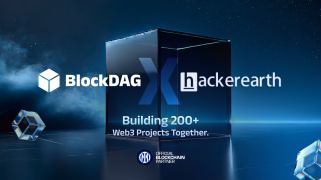 Thecryptoupdates
Thecryptoupdates DogeHome
DogeHome The Crypto Times
The Crypto Times Coincu
Coincu Optimisus
Optimisus Coin_Gabbar
Coin_Gabbar






















